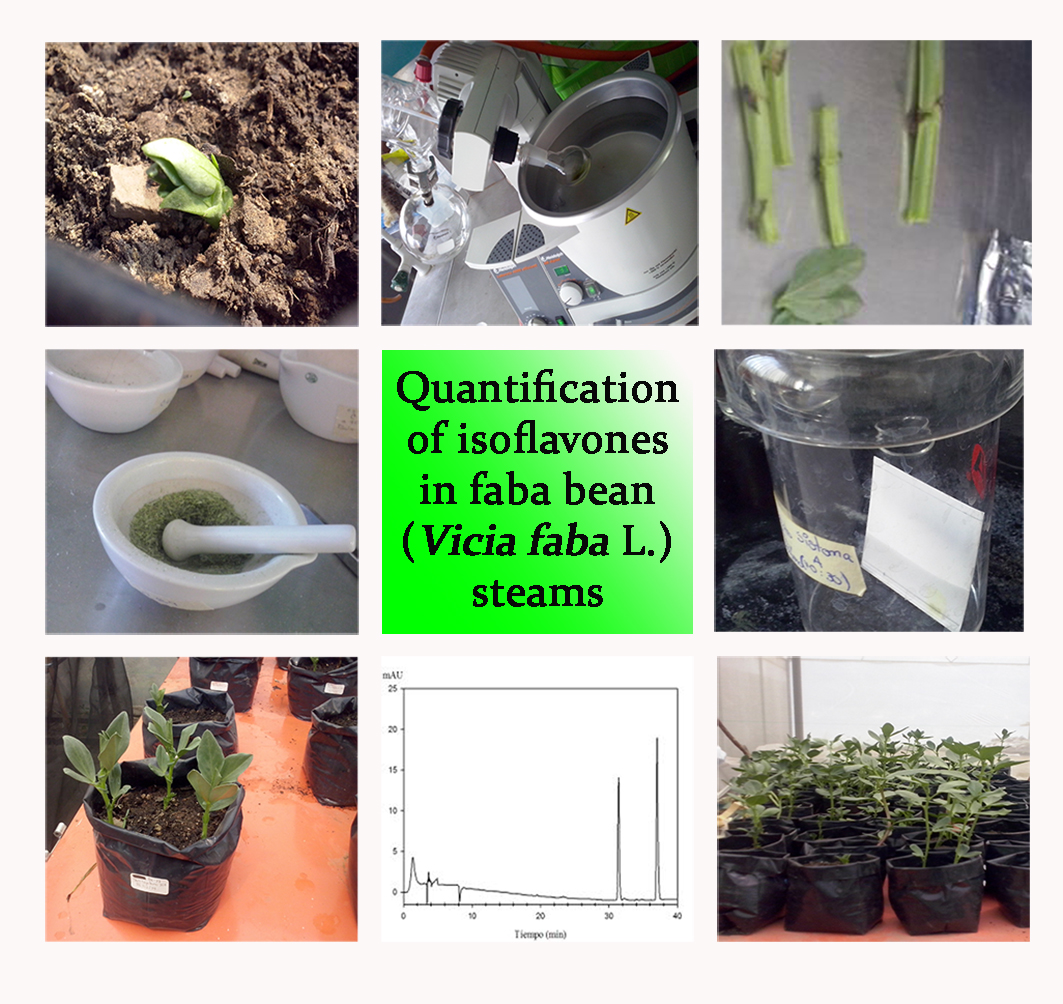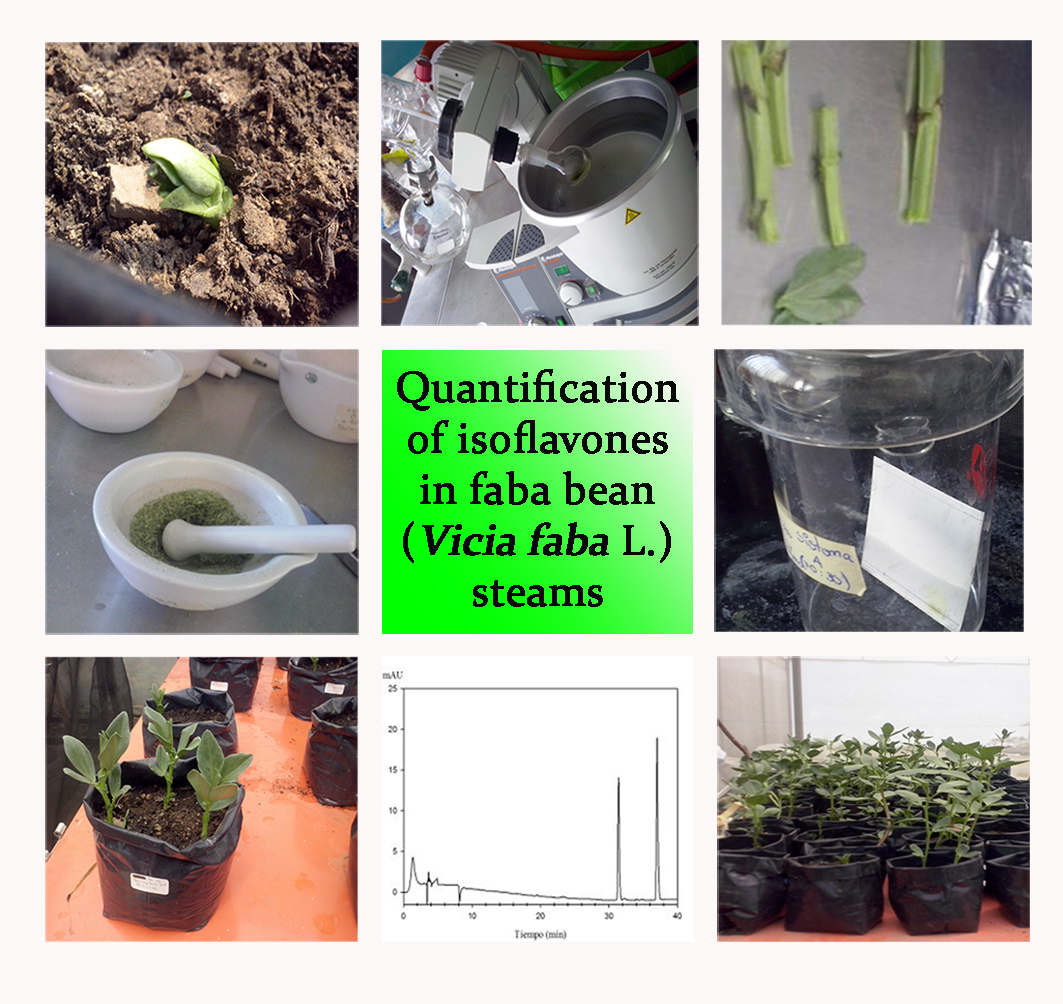Quantification of isoflavones in stems of faba bean (Vicia faba L.)
Palabras clave:
daidzeína, genisteína, cromatografía en capa fina, cromatografía líquida de alta resoluciónResumen

The isoflavone aglycones daidzein and genistein are phytoestrogens that ameliorate the symptoms of menopause and assist in the prevention of chronic diseases. These compounds have been studied mainly in soya but have also been detected in faba beans (Vicia faba L.). Since little information is available concerning the content of isoflavone aglycones in faba beans from Mexico, the present study aimed to establish the presence and concentrations of daidzein and genistein in stems of faba bean cultivars from the Mexican central plateau. Cultivars C-281, C-146, C-160, C-89, C-288, C-181, C-93 and C-Zac22 were grown under greenhouse conditions and 6 to 7 week-old stems were harvested. The presence of daidzein and genistein in these tissues was confirmed by thin layer chromatography using a solvent system containing toluene-ethyl acetate-acetone-formic acid (74:14.8:7.4:3.8). High-pressure liquid chromatographic analysis revealed significant differences (p≤0.01) in the concentrations of aglycones with levels of genistein in the range 0.30 to 0.85 mg kg-1 dry weight (DW) and of daidzein, which was more abundant in all cultivars, present in the concentration range 34.92 to 59.98 mg kg-1 DW. Stems of cultivars C-89, C-181, C-281 and C-146 were exceptional for their concentrations of isoflavones and may represent good alternative sources of phytoestrogens.
Descargas

Descargas
Publicado
Cómo citar
Número
Sección
Licencia
Aquellos autores/as que tengan publicaciones con esta revista, aceptan las Políticas Editoriales.










.jpg)




